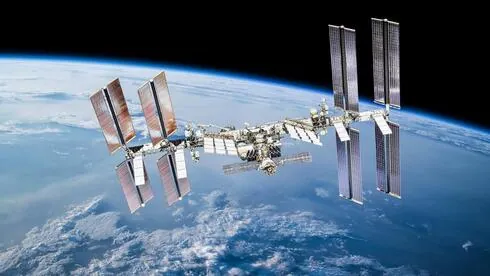
Tensions Mount as the International Space Station Faces Critical Air Leak Issues
2024-11-22
Author: Amelia
The ISS: Age, Vulnerability, and Disagreement
The International Space Station (ISS) may be facing a crisis as increasing tensions arise between the United States and Russia over significant air leaks detected in the Russian segment of the station. These leaks have raised alarming questions about the future safety and operational capacity of this crucial platform for international research and collaboration.
Initially flagged in 2019 in the Zvezda ISS Service Module, the leaks are primarily located in a vestibule known as PrK, which serves as the docking port for Progress cargo spacecraft. To mitigate air loss, crew members have kept the hatch closed, only opening it when access to the docked spacecraft is necessary. However, despite these precautions, the situation has deteriorated, intensifying disagreements between NASA and Roscosmos, the Russian counterpart, over the leak's cause and severity.
Roscosmos argues that material fatigue from microscopic vibrations is to blame for the cracks, while NASA suggests that a combination of environmental factors and internal air pressure is at play. This ongoing dispute has significantly slowed down resolution efforts with the air leak steadily growing in severity, now reported to have reached an alarming rate of 1.7 kilograms per day.
Former NASA Associate Administrator Bob Cabana now heads NASA's ISS Advisory Committee and has noted different outlooks between the two agencies. Although the Russian team maintains that continued operations are safe, Cabana highlighted that this assertion lacks satisfactory proof for NASA, while the perception of risk remains on the American side. Joint recommendations have been made to further investigate the vestibule’s condition, with a collaboration likely involving experts from industry and academia.
A Pioneering Launch: SpaceX's Next Steps
On the technology frontier, SpaceX is gearing up for the sixth test flight of its Starship system, with a targeted launch set for November 19 at 10:00 PM UTC. This upcoming mission seeks to replicate the success of its predecessor, where the Super Heavy booster managed to be caught by the specialized catch tower as it returned to the launch site.
This test will again propel the Starship into space, where it will practice critical maneuvers without achieving full orbit. The main innovation, however, lies in attempting to ignite one of the spacecraft’s engines in space, an essential prototype step not just for future missions but also for refining lunar utilizing strategies.
NASA has already designated Starship as a pivotal component for its Artemis program, aiming to return humans to the Moon. Beyond lunar landings, SpaceX envisions Starship establishing a human presence on Mars, along with reshaping satellite deployment and communications.
NASA's Trials: Budget Cuts and Program Reassessments
As SpaceX forges ahead, NASA faces a precarious future with its flagship Space Launch System (SLS). Criticized for being outdated, with its dependencies traced back to the Space Shuttle era and its single-use design, the SLS has only launched once—successfully delivering the uncrewed Orion spacecraft on a mission that experienced extensive prior delays due to technical hitches.
Recent whispers from insiders suggest that NASA may be considering the cancellation of the SLS program, with alternative options like SpaceX’s Falcon Heavy or even Starship itself being floated for transporting astronauts to the Moon. This shift emphasizes a potentially radical approach, especially given the rising influence of private companies in space exploration.
Additionally, NPR’s Jet Propulsion Laboratory (JPL) announced a major workforce reduction this week, laying off approximately 325 employees—about 5% of its workforce—due to budget constraints, following prior cuts as well. This has sparked concerns about future research projects and the direction of space exploration funded by NASA.
The Mysteries of Mars: Ancient Shorelines Unearthed
In a breakthrough for planetary science, data gathered by China's Mars rover Zhurong indicates that Mars may have once been a watery world, with researchers proposing evidence of ancient shorelines. Using images from the Zhurong rover and additional satellite data, scientists from The Hong Kong Polytechnic University have identified sediment layers indicative of past aquatic environments, suggesting Mars once hosted an ocean that may have been lost to space due to atmospheric changes.
As current efforts to retrieve Mars samples are halted, and with China poised to undertake its own sample-return mission, the potential for uncovering the Red Planet's secrets only intensifies.
Uranus: New Insights into its Mysterious Magnetosphere
In yet another revelation, a study on Uranus suggests that previous measurements of its magnetic field might not accurately reflect typical conditions. Analysis suggests that a solar storm during Voyager 2's 1986 flyby may have distorted observed magnetic readings. This recalibration of understanding could alter our comprehension of Uranus's magnetosphere and its surrounding charged particle environment.
With a multitude of discoveries on the horizon, this week has underscored both the challenges and the potential triumphs faced by the global space community as they push the boundaries of exploration and scientific understanding. Will humanity hold the key to the cosmos? Stay tuned!









 Brasil (PT)
Brasil (PT)
 Canada (EN)
Canada (EN)
 Chile (ES)
Chile (ES)
 España (ES)
España (ES)
 France (FR)
France (FR)
 Hong Kong (EN)
Hong Kong (EN)
 Italia (IT)
Italia (IT)
 日本 (JA)
日本 (JA)
 Magyarország (HU)
Magyarország (HU)
 Norge (NO)
Norge (NO)
 Polska (PL)
Polska (PL)
 Schweiz (DE)
Schweiz (DE)
 Singapore (EN)
Singapore (EN)
 Sverige (SV)
Sverige (SV)
 Suomi (FI)
Suomi (FI)
 Türkiye (TR)
Türkiye (TR)